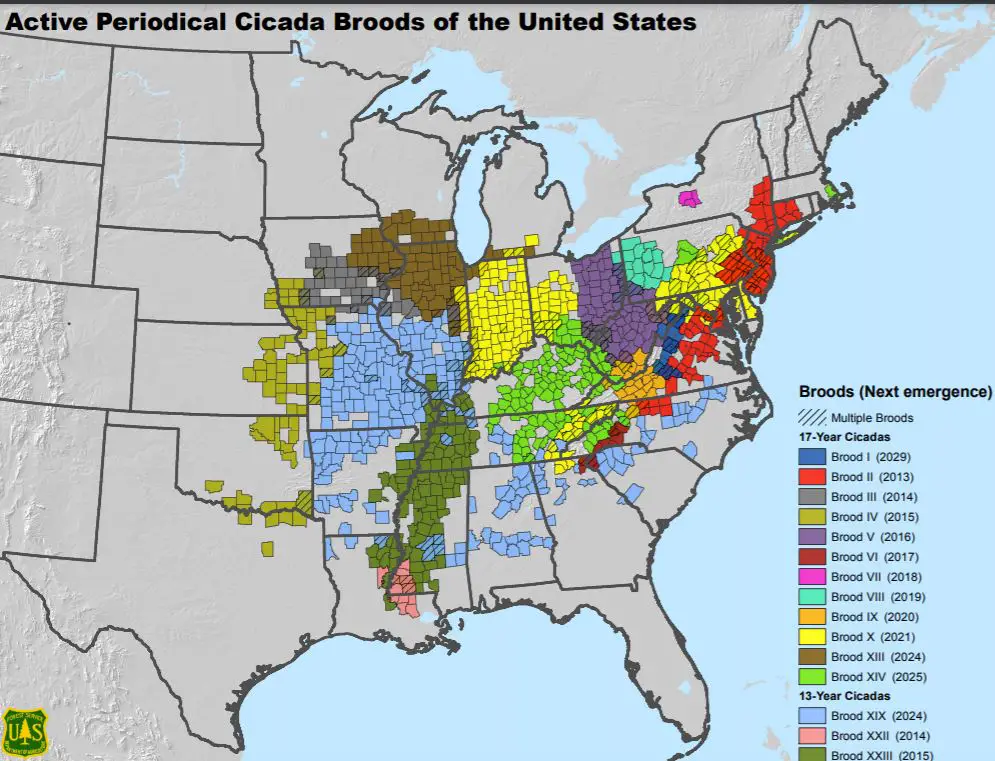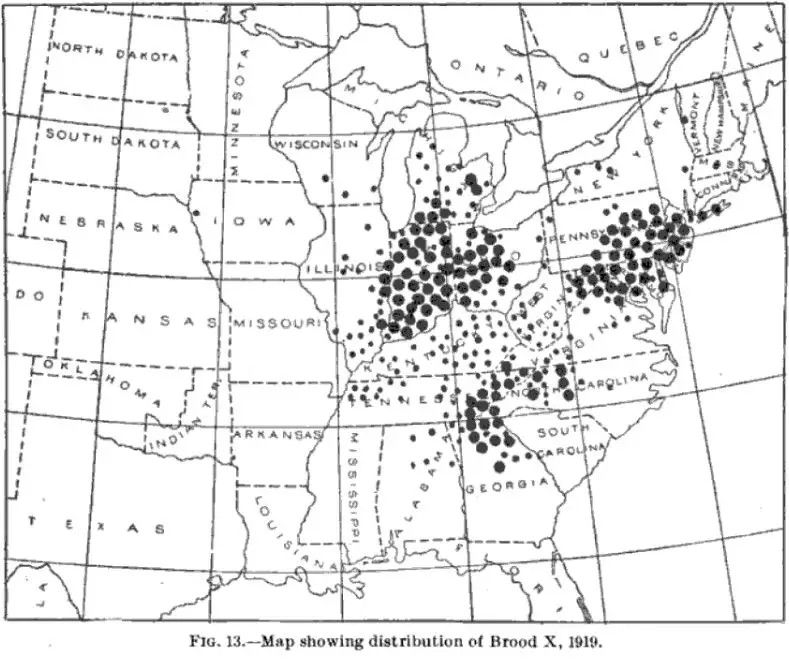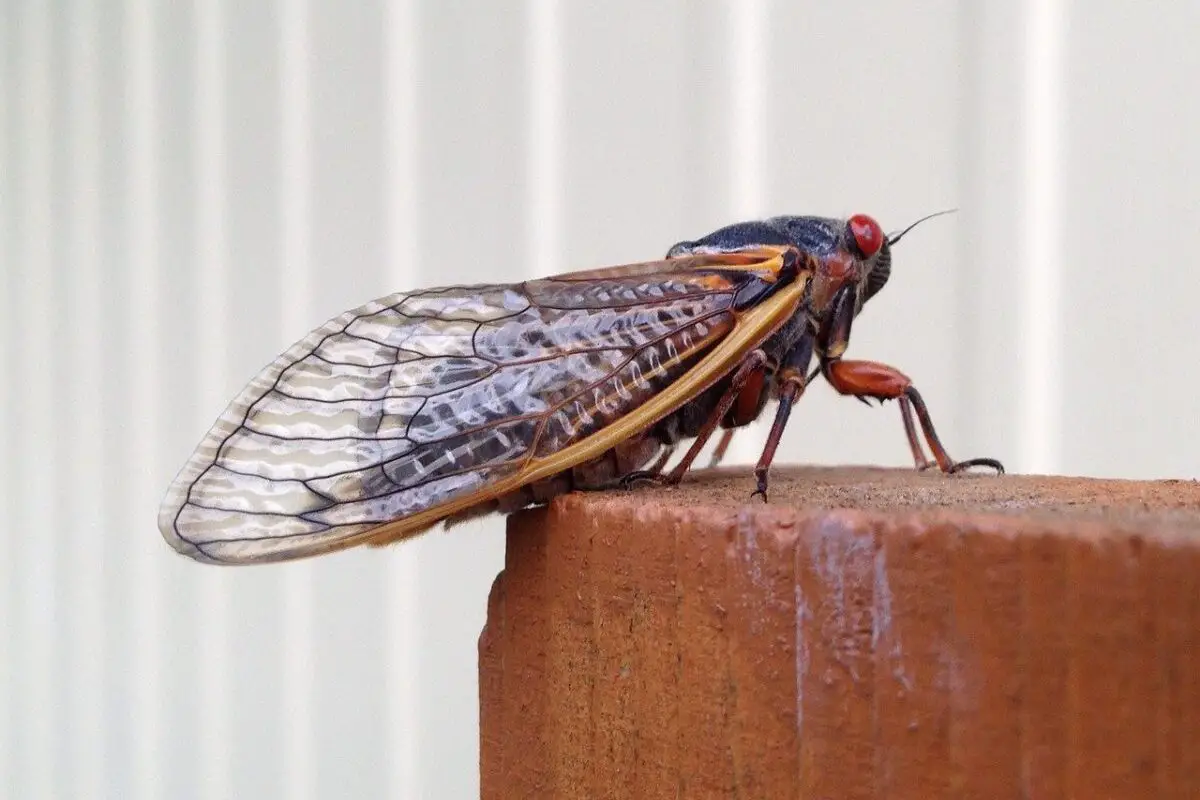Imagine that you have not seen the light of day since 2004. Has a cicada, that is what you do with several billion of your species, namely, spend a life as a larva underground. Starting in late April, some 15 states will witness the emergence of these extremely loud little critters as they take to the trees and sing in their quest to look for mates. 2021 swam being named BroodX as they are the largest groups on this cycle in terms of number and geographic area.

Starting in mid to late April, the buzzing bugs will make their presence known in Michigan, Ohio, Washington DC, Delaware, Georgia, Illinois, Indiana, Kentucky, Maryland, New Jersey, New York, North Carolina, Pennsylvania, Tennessee, Virginia, and West Virginia. The emergence will usually happen on the second or third day after the daytime temperatures reach 80 degrees. This allows the soil temperatures a few inches underground hit 64 degrees—a signal for the cicada to make their way to the surface.

It’s expected that only the extreme portion of southern Michigan will see the bulk of the emergence. Current maps from the USDA show this pattern. Poor Indiana will in inundated with the cicada buzz this spring. However, that doesn’t mean other areas of Michigan won’t see some of BroodX. Older maps from the 1900s show patterns extending on the Thumb region’s southern edge, including Port Huron, Imlay City, Frankenmuth, and Owasso. A researcher in the early 1900s found that BroodX sighting can be found in Barry, Branch, Calhoun, Cass, Eaton, Genesee, Gratiot, Hillsdale, Ionia, Jackson, Kalamazoo, Lake, Lenawee, Livingston, Missaukee, Monroe, Muskegon, Newaygo, Oakland, Saginaw, St. Clair, St. Joseph, Van Buren, Washtenaw, and Wayne counties.
The Cicada Song
Male cicadas have a unique ribbed organ called a tymbal. This is a membrane that, when rubbed together, produces a high-pitched sound. One blogger who is from Indiana described the last emergence he endured as a kid in 1987.
“The noise never ended. Day. Night. Dawn. Dusk. It didn’t matter. Their “song” wasn’t a song at all, but an endless, atonal drone. Individually, it starts out as a high-pitched rattle that picks up speed and volume, produced by a thin membrane beneath their wings called tymbals. To “sing”, the cicadas vibrate the tymbals like drumheads and then use the volume of their tubby bodies as an organic megaphone. The volume of the cicada’s tymbals has been measured as high as 106 decibels. It wasn’t a song. It was an insect’s horny, mindless bellow.”
The Orangebean
The Next Emergence of BroodX
After mating and laying eggs in the branches of trees, the insect dies. The cicadas that hatch from those eggs this year will drop to the earth and burrow for 17 years. Once established the little larva will feed on the sap from the tree roots they were hatched. They will wait 17 more years for a couple of perfect 80 degree days in Spring 2038 to begin the cycle again.






I know most hate these but I’m actually looking forward to it. I remember hearing them as a kid – I loved it!